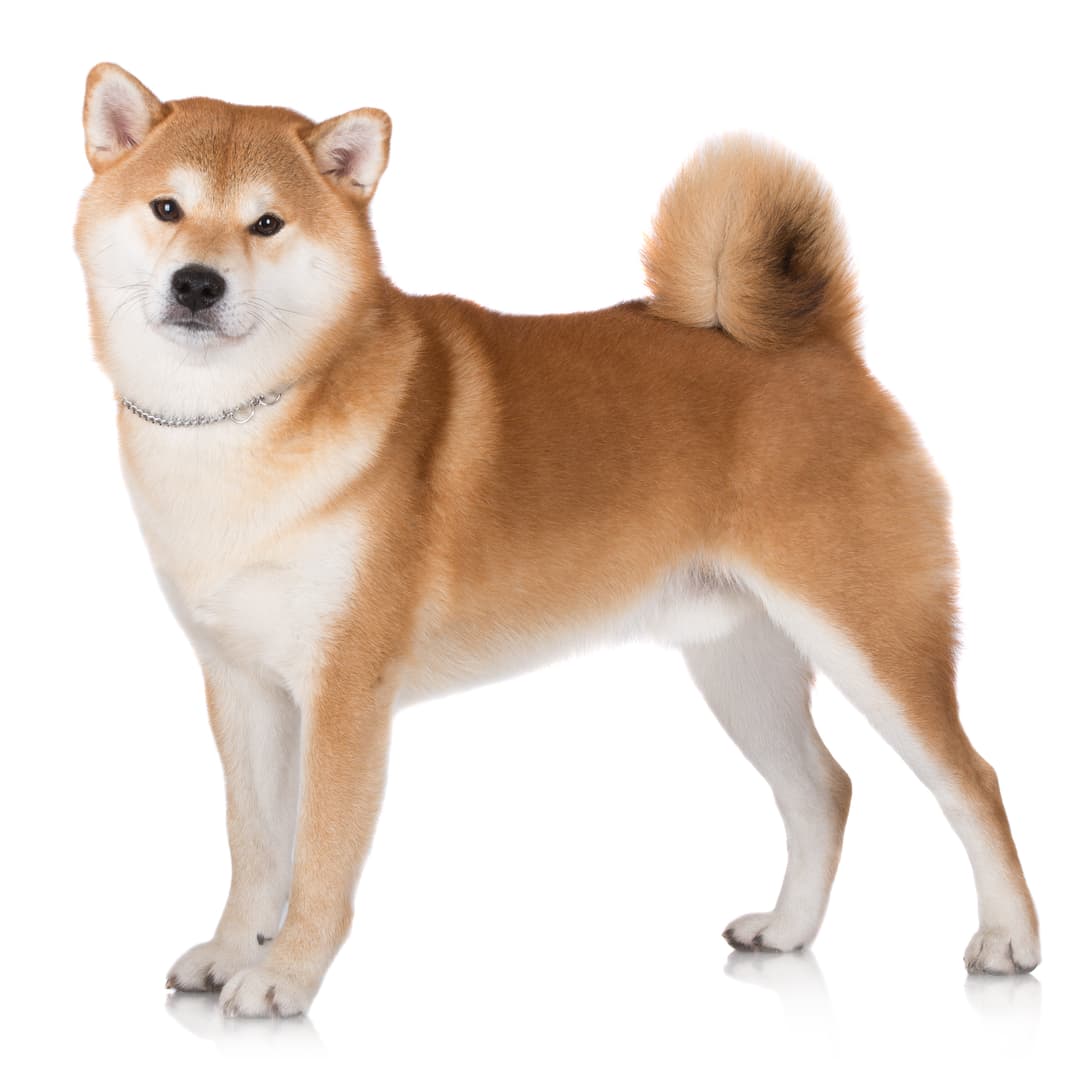Basepaws analyzes this breed as part of a group of other breeds.


Basepaws analyzes this breed as part of a group of other breeds.


Basepaws analyzes this breed as part of a group that also includes Akita (Japanese and American).
Despite being distinct in characteristics and origin, some pairs or groups of breeds lack the number of genetic differences required to distinguish these populations from one another, particularly when only a subset of these differences are inherited by a mixed breed dog. As we continue to expand our breed database, we aim to increase the resolution of our ancestry algorithm such that differentiating between increasingly specific ancestral sources becomes possible.

The Akita Inu, commonly referred to as the Akita, is a powerful and majestic dog breed that originated in Japan. They were originally developed as hunting dogs and were highly valued for their strength, agility, and bravery. The breed's ancestors were known as Matagi Akitas, which were used to hunt large game, such as boar, deer, and even bears. Over time, the Akita breed was refined and standardized through selective breeding. During the 17th century, the Akita was used as a fighting dog in Japan's dog-fighting pits. However, in the early 20th century, a movement arose to preserve the breed's original characteristics and promote its status as a national treasure of Japan. This led to the establishment of the Akita breed standard in 1934 by the Akita Inu Hozankai Society, which defined the breed's distinctive features. "
The Akita Inu can suffer from acanthomatous ameloblastoma, amelogenesis imperfecta, atopic dermatitis, brachygnathism, cataracts, cruciate ligament disease, deafness, elbow dysplasia (fragmented coronoid process), enamel hypoplasia, entropion, epidermolysis bullosa, epidermolysis bullosa (dystrophic), exocrine pancreatic insufficiency, Factor VIII deficiency (hemophilia A), gastric dilation/volvulus, glaucoma, glycogen storage disease III, hip dysplasia, hypothyroidism, immune-mediated polyarthritis, immunoglobulin A (IgA) deficiency, microcytosis, microphthalmia, myasthenia gravis, osteochondritis dissecans
(shoulder), osteochondritis dissecans (stifle), osteochondrodysplasia, panosteitis, patellar luxation, pemphigus foliaceus, persistent pupillary membranes, portosystemic shunts, prognathism, progressive retinal atrophy, pseudohyperkalemia, renal dysplasia, retinal dysplasia, sebaceous adenitis, sebaceous adenitis, uveodermatologic syndrome, vestibular disease (congenital), and von Willebrand disease.
The Akita is susceptible to bloat, also known as gastric dilation volvulus (GDV). This is a life-threatening condition that can come on suddenly, so it’s important to know the warning signs and get an affected dog immediate veterinary care. This breed can also benefit from regular hip, thyroid, and eye evaluations.
Akitas are known for their loyalty, independence, and strong protective instincts. They are often described as dignified, courageous, and reserved. While they can be aloof with strangers, they form deep bonds with their family members and are generally affectionate and devoted.
Akitas are intelligent dogs but can also be stubborn and strong-willed. They require consistent and firm training from an early age to ensure they become well-mannered companions. Early socialization is also crucial to help them develop proper behavior around other animals and unfamiliar people.
As natural guardians, Akitas have a strong protective instinct and can be territorial. They tend to be wary of strangers and may exhibit a reserved or aloof demeanor. Proper socialization and training can help manage their protective tendencies and ensure they remain well-behaved in various situations.
Akitas have a dominant nature and may not be suitable for first-time dog owners or those who lack experience with handling large, powerful breeds. They thrive in homes with experienced owners who can provide them with consistent training, mental stimulation, and plenty of exercise.
A canine genetic lineage is a group of individuals or entire breeds that descended from common ancestors predating modern breed formation. Often these lineages are associated with a ‘type’ of dog with a unique historical working role and associated behaviors (e.g., herding, scent hunting, etc.).
Spitz and Sled Dogs originate in the Arctic and subarctic regions which caused them the develop adaptations to cold climates. Some of these adaptations give rise to characteristics of the lineage, most notably a dense double coat that helps with insulation. The lineage of these dogs can be followed back to ancient breeds developed by Indigenous people. These ancient breeds were used as an aid for transportation, herding, guarding, and hunting. These jobs have created dogs that are independent, intelligent and have strong work ethics as well as a sturdy body that helps them to pull sleds or go on long journeys over rough terrain.
Example breeds with ancestry from this lineage include Akita, Chow Chow, and Siberian Husky.
When a child is born in Japan the family receives a statue of an Akita to signify health, happiness, and a long life.
Richard Gere starred in the movie titled, "Hachi: A Dog's Tale". The movie was based on a real-ife Akita named Hachiko, who waited for his master at a Japanese train station for 9 years. Hachiko didn't understand that his owner had died unexpectedly, and so waited every day for him to come home on the train.
The "Inu" that is sometimes added to the Akita name simply means "dog".
https://www.akc.org/dog-breeds/akita/
https://www.petmd.com/dog/breeds/c_dg_akita https://www.sciencedirect.com/science/article/abs/pii/S0034528816300601
Recommended by top vets with decades of experience
21 breeds
64 genetic health markers
50 genetic trait markers
